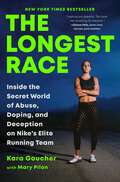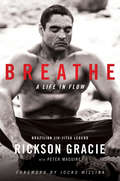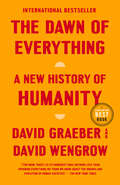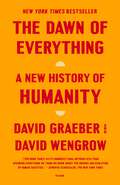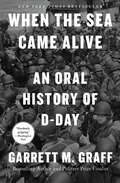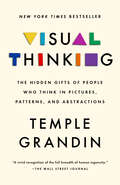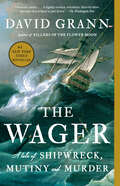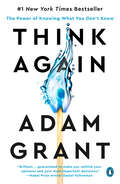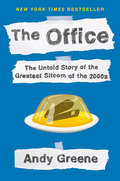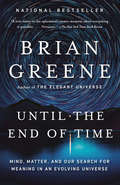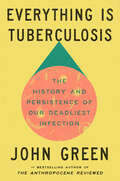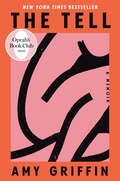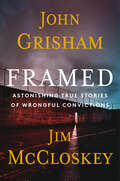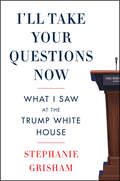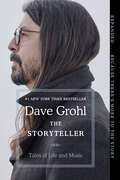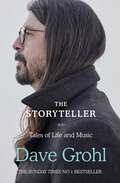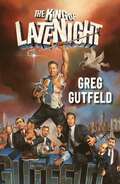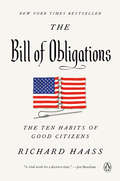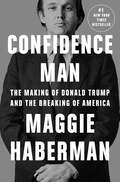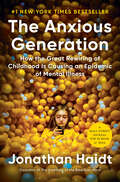Special Collections
New York Times Best Sellers - Non-Fiction
Description: Bookshare is pleased to offer the top 10 non-fiction books from the New York Times best seller list on a weekly basis. Books are added in as they become available. The month corresponds to the first time they appeared on the list. #adults
- Table View
- List View
The Longest Race
by Kara GoucherIn this unvarnished and affecting memoir, Olympian Kara Goucher reveals her experience of living through and speaking out about one of the biggest scandals in running.
Kara Goucher grew up with Olympic dreams. She excelled at running from a young age and was offered a Nike sponsorship deal when she graduated from college. Then in 2004, she was invited to join a secretive, lavishly funded new team, dubbed the Nike Oregon Project.
Coached by distance running legend Alberto Salazar, it seemed like the opportunity of a lifetime. Kara was soon winning a World Championship medal, going to the Olympics, and standing on the podium at the New York and Boston marathons, just like her coach. But behind the scenes, Salazar was hiding dark secrets. He pushed the limits of anti-doping rules, and created what Kara experienced as a culture of abuse, the extent of which she reveals in her book for the first time. Meanwhile, Nike stood by Alberto for years and proved itself capable of shockingly misogynistic corporate practices.
Told with stunning honesty, The Longest Race is an unforgettable story and a call to action. Kara became a crusader for female athletes and a key witness helping to get Salazar banned from coaching at the Olympic level. Kara’s memoir reveals how she broke through the fear of losing everything, bucked powerful forces to take control of her life and career, and reclaimed her love of running.
New York Times Bestseller
Breathe
by Rickson Gracie and Peter Maguire*An instant New York Times bestseller, USA Today bestseller, and Wall Street Journal bestseller*From Brazilian Jiu Jitsu legend Rickson Gracie, a riveting memoir weaving the story of his stunning career with the larger history of his family dynasty and Jiu Jitsu.Undefeated through his final fight, Rickson Gracie belongs in the fighting pantheon with Bruce Lee, Chuck Norris, and Mike Tyson. In Breathe, Rickson shares the full story of how his father and uncles came to develop Jiu Jitsu, what it was like to grow up among several generations of world-renowned fighters, and the principles and skills that guided him to his undefeated record. Gracie’s classic memoir offers indispensable insights into martial arts, human performance, and how the connection between mind and body can be harnessed for success both inside and outside the ring.
The Dawn of Everything
by David Graeber and David WengrowRenowned activist and public intellectual David Graeber teams up with professor of comparative archaeology David Wengrow to deliver a trailblazing account of human history, challenging our most fundamental assumptions about social evolution--from the development of agriculture and cities to the emergence of "the state," political violence, and social inequality--and revealing new possibilities for human emancipation.
For generations, our remote ancestors have been cast as primitive and childlike--either free and equal innocents, or thuggish and warlike. Civilization, we are told, could only be achieved by sacrificing those original freedoms, or alternatively, by taming our baser instincts. Graeber and Wengrow show how such theories first emerged in the eighteenth century as a conservative reaction to powerful critiques of European society posed by Indigenous observers and intellectuals. Revisiting this encounter has startling implications for how we make sense of human history today, including the origins of farming, property, cities, democracy, slavery, and civilization itself.
Drawing on path-breaking research in archaeology and anthropology, the authors show how history becomes a far more interesting place once we learn to throw off our conceptual shackles and perceive what's really there. If humans did not spend 95% of their evolutionary past in tiny bands of hunter-gatherers, what were they doing all that time? If agriculture, and cities, did not mean a plunge into hierarchy and domination, then what kinds of social and economic organization did they lead to? What was really happening during the periods that we usually describe as the emergence of "the state"? The answers are often unexpected, and suggest that the course of human history may be less set in stone, and more full of playful, hopeful possibilities, than we tend to assume.
The Dawn of Everything fundamentally transforms our understanding of the human past and offers a path toward imagining new forms of freedom, new ways of organizing society. This is a monumental book of formidable intellectual range, animated by curiosity, moral vision, and a faith in the power of direct action.
The Dawn of Everything
by David Graeber and David WengrowRenowned activist and public intellectual David Graeber teams up with professor of comparative archaeology David Wengrow to deliver a trailblazing account of human history, challenging our most fundamental assumptions about social evolution--from the development of agriculture and cities to the emergence of "the state," political violence, and social inequality--and revealing new possibilities for human emancipation.
For generations, our remote ancestors have been cast as primitive and childlike--either free and equal innocents, or thuggish and warlike. Civilization, we are told, could only be achieved by sacrificing those original freedoms, or alternatively, by taming our baser instincts. Graeber and Wengrow show how such theories first emerged in the eighteenth century as a conservative reaction to powerful critiques of European society posed by Indigenous observers and intellectuals. Revisiting this encounter has startling implications for how we make sense of human history today, including the origins of farming, property, cities, democracy, slavery, and civilization itself.
Drawing on path-breaking research in archaeology and anthropology, the authors show how history becomes a far more interesting place once we learn to throw off our conceptual shackles and perceive what's really there. If humans did not spend 95% of their evolutionary past in tiny bands of hunter-gatherers, what were they doing all that time? If agriculture, and cities, did not mean a plunge into hierarchy and domination, then what kinds of social and economic organization did they lead to? What was really happening during the periods that we usually describe as the emergence of "the state"? The answers are often unexpected, and suggest that the course of human history may be less set in stone, and more full of playful, hopeful possibilities, than we tend to assume.
The Dawn of Everything fundamentally transforms our understanding of the human past and offers a path toward imagining new forms of freedom, new ways of organizing society. This is a monumental book of formidable intellectual range, animated by curiosity, moral vision, and a faith in the power of direct action.
New York Times Bestseller
When the Sea Came Alive
by Garrett M. GraffA NEW YORK TIMES BESTSELLER • &“Absolutely gripping.&” —The Washington Post • &“A masterpiece of oral history…stirring, surprising, grim, joyous, moving, and always riveting.&” —Evan Thomas From the New York Times bestselling author of The Only Plane in the Sky and Pulitzer Prize finalist for Watergate comes the most complete and up-to-date account of D-Day—the largest seaborne invasion in history and the moment that secured the Allied victory in World War II—featuring hundreds of eyewitness accounts.June 6, 1944—known to us all as D-Day—is one of history&’s greatest and most unbelievable military triumphs. The surprise sunrise landing of more than 150,000 Allied troops on the beaches of occupied northern France is one of the most consequential days of the 20th century. Now, Pulitzer Prize finalist Garrett M. Graff, historian and author of The Only Plane in the Sky and Watergate, brings them all together in a one-of-a-kind, bestselling oral history that explores this seminal event in vivid, heart-pounding detail. The story begins in the opening months of the 1940s, as the Germany army tightens its grip across Europe, seizing control of entire nations. The United States, who has resolved to remain neutral, is forced to enter the conflict after an unexpected attack by the Japanese at Pearl Harbor. For the second time in fifty years, the world is at war, with the stakes higher than they&’ve ever been before. Then in 1943, Allied leaders Franklin D. Roosevelt and Winston Churchill meet in Casablanca to discuss a new plan for victory: a coordinated invasion of occupied France, led by General Dwight D. Eisenhower. Failure is not an option. Over the next eighteen months, the large-scale action is organized, mobilizing soldiers across Europe by land, sea, and sky. And when the day comes, it is unlike anything the world has ever seen. These moments and more are seen in real time. A visceral, page-turning drama told through the eyes of those who experienced them—from soldiers, nurses, pilots, children, neighbors, sailors, politicians, volunteers, photographers, reporters and so many more, When the Sea Came Alive &“is the sort of book that is smart, inspiring, and powerful—and adds so much to our knowledge of what that day was like and its historic importance forever&” (Chris Bohjalian)—an unforgettable, fitting tribute to the men and women of the Greatest Generation.
Visual Thinking
by Temple GrandinINSTANT NEW YORK TIMES BESTSELLERWINNER OF THE NAUTILUS GOLD AWARD&“A powerful and provocative testament to the diverse coalition of minds we&’ll need to face the mounting challenges of the twenty-first century.&” —Steve Silberman &“An absolute eye-opener.&” —Frans de WaalA landmark book that reveals, celebrates, and advocates for the special minds and contributions of visual thinkersA quarter of a century after her memoir, Thinking in Pictures, forever changed how the world understood autism, Temple Grandin— &“an anthropologist on Mars,&” as Oliver Sacks dubbed her—transforms our awareness of the different ways our brains are wired. Do you have a keen sense of direction, a love of puzzles, the ability to assemble furniture without crying? You are likely a visual thinker. With her genius for demystifying science, Grandin draws on cutting-edge research to take us inside visual thinking. Visual thinkers constitute a far greater proportion of the population than previously believed, she reveals, and a more varied one, from the photo-realistic &“object visualizers&” like Grandin herself, with their intuitive knack for design and problem solving, to the abstract, mathematically inclined &“visual spatial&” thinkers who excel in pattern recognition and systemic thinking. She also makes us understand how a world increasingly geared to the verbal tends to sideline visual thinkers, screening them out at school and passing over them in the workplace. Rather than continuing to waste their singular gifts, driving a collective loss in productivity and innovation, Grandin proposes new approaches to educating, parenting, employing, and collaborating with visual thinkers. In a highly competitive world, this important book helps us see, we need every mind on board.
The Wager
by David Grann#1 NEW YORK TIMES BESTSELLER • From the author of Killers of the Flower Moon, a page-turning story of shipwreck, survival, and savagery, culminating in a court martial that reveals a shocking truth. The powerful narrative reveals the deeper meaning of the events on The Wager, showing that it was not only the captain and crew who ended up on trial, but the very idea of empire.A Best Book of the Year: The New York Times, The Wall Street Journal, The New Yorker, TIME, Smithsonian, NPR, Vulture, Kirkus Reviews&“Riveting...Reads like a thriller, tackling a multilayered history—and imperialism—with gusto.&” —Time "A tour de force of narrative nonfiction.&” —The Wall Street JournalOn January 28, 1742, a ramshackle vessel of patched-together wood and cloth washed up on the coast of Brazil. Inside were thirty emaciated men, barely alive, and they had an extraordinary tale to tell. They were survivors of His Majesty&’s Ship the Wager, a British vessel that had left England in 1740 on a secret mission during an imperial war with Spain. While the Wager had been chasing a Spanish treasure-filled galleon known as &“the prize of all the oceans,&” it had wrecked on a desolate island off the coast of Patagonia. The men, after being marooned for months and facing starvation, built the flimsy craft and sailed for more than a hundred days, traversing nearly 3,000 miles of storm-wracked seas. They were greeted as heroes.But then ... six months later, another, even more decrepit craft landed on the coast of Chile. This boat contained just three castaways, and they told a very different story. The thirty sailors who landed in Brazil were not heroes – they were mutineers. The first group responded with countercharges of their own, of a tyrannical and murderous senior officer and his henchmen. It became clear that while stranded on the island the crew had fallen into anarchy, with warring factions fighting for dominion over the barren wilderness. As accusations of treachery and murder flew, the Admiralty convened a court martial to determine who was telling the truth. The stakes were life-and-death—for whomever the court found guilty could hang.The Wager is a grand tale of human behavior at the extremes told by one of our greatest nonfiction writers. Grann&’s recreation of the hidden world on a British warship rivals the work of Patrick O&’Brian, his portrayal of the castaways&’ desperate straits stands up to the classics of survival writing such as The Endurance, and his account of the court martial has the savvy of a Scott Turow thriller. As always with Grann&’s work, the incredible twists of the narrative hold the reader spellbound.
Think Again
by Adam GrantThe bestselling author of Give and Take and Originals examines the critical art of rethinking: learning to question your opinions and open other people's minds, which can position you for excellence at work and wisdom in life
Intelligence is usually seen as the ability to think and learn, but in a rapidly changing world, there's another set of cognitive skills that might matter more: the ability to rethink and unlearn. In our daily lives, too many of us favor the comfort of conviction over the discomfort of doubt. We listen to opinions that make us feel good, instead of ideas that make us think hard. We see disagreement as a threat to our egos, rather than an opportunity to learn. We surround ourselves with people who agree with our conclusions, when we should be gravitating toward those who challenge our thought process. The result is that our beliefs get brittle long before our bones. We think too much like preachers defending our sacred beliefs, prosecutors proving the other side wrong, and politicians campaigning for approval--and too little like scientists searching for truth. Intelligence is no cure, and it can even be a curse: being good at thinking can make us worse at rethinking. The brighter we are, the blinder to our own limitations we can become.
Organizational psychologist Adam Grant is an expert on opening other people's minds--and our own. As Wharton's top-rated professor and the bestselling author of Originals and Give and Take, he makes it one of his guiding principles to argue like he's right but listen like he's wrong. With bold ideas and rigorous evidence, he investigates how we can embrace the joy of being wrong, bring nuance to charged conversations, and build schools, workplaces, and communities of lifelong learners. You'll learn how an international debate champion wins arguments, a Black musician persuades white supremacists to abandon hate, a vaccine whisperer convinces concerned parents to immunize their children, and Adam has coaxed Yankees fans to root for the Red Sox. Think Again reveals that we don't have to believe everything we think or internalize everything we feel. It's an invitation to let go of views that are no longer serving us well and prize mental flexibility over foolish consistency. If knowledge is power, knowing what we don't know is wisdom.
A New York Times Bestseller
Got Your Number
by Mike GreenbergESPN personality (Get Up and #Greeny) and New York Times bestselling author Mike Greenberg partners with mega-producer Hembo to settle once and for all which legends flat-out own which numbers. In short essays certain to provoke debate between and amongst all generations, Greeny uses his lifetime of sports knowledge to spin yarns of the legends among the legends and tell you why some have claimed their spot in the top 100 of all time.
Sports and numbers go hand in hand. Sports and loud, assertive debate? Even better. Cheering on, agonizing over, and being in plain awe of your favorite players has left you with a deep and intricate memory of their greatness, not to mention well-honed arguments as to why your favorites are really the best. In arenas, in front of your TV, and in bars, you’ve debated friends and strangers alike. You’ve joyfully mocked your friends’ (sometimes laughable) favorites. You’ve spouted accomplishments, statistics: Yours won six titles, batted .350 in the clutch, or generated 82% of their team’s scoring.
But not all numbers are created equal. Some are accomplishments. Others are identity. Looming large over any image you have of an athlete: the number on their jersey. Numbers often provide the most visceral parts of any sports legend’s identity. They are what people remember—worldwide. Jordan, Jeter, Brady—to fans, they are as much their number as they are anything else. Sure, 1 through 100 might seem like a large range, but fierce competition across the ages has blessed only a lucky few to claim one of these as their own. For some, the victors may not be so obvious. That’s why Greeny’s here to help.
Ascend into discussion, fans of all stripes. Come away enlightened. Or maybe a little enraged. Either way, you are sure to be occasionally surprised—and endlessly entertained. Whatever your sport, welcome to the place where all the arguments are finally decided, once and for all.
The Office
by Andy GreeneThe untold stories behind The Office, one of the most iconic television shows of the twenty-first century, told by its creators, writers, and actors When did you last hang out with Jim, Pam, Dwight, Michael, and the rest of Dunder Mifflin? It might have been back in 2013, when the series finale aired . . . or it might have been last night, when you watched three episodes in a row. But either way, fifteen years after the show first aired, it&’s more popular than ever, and fans have only one problem--what to watch, or read, next. Fortunately, Rolling Stone writer Andy Greene has that answer. In his brand-new oral history, The Office: The Untold Story of the Greatest Sitcom of the 2000s, Greene will take readers behind the scenes of their favorite moments and characters. Greene gives us the true inside story behind the entire show, from its origins on the BBC through its impressive nine-season run in America, with in-depth research and exclusive interviews. Fans will get the inside scoop on key episodes from "The Dundies" to "Threat Level Midnight" and "Goodbye, Michael," including behind-the-scenes details like the battle to keep it on the air when NBC wanted to pull the plug after just six episodes and the failed attempt to bring in James Gandolfini as the new boss after Steve Carell left, spotlighting the incredible, genre-redefining show created by the family-like team, who together took a quirky British import with dicey prospects and turned it into a primetime giant with true historical and cultural significance. Hilarious, heartwarming, and revelatory, The Office gives fans and pop culture buffs a front-row seat to the phenomenal sequence of events that launched The Office into wild popularity, changing the face of television and how we all see our office lives for decades to come.
Until the End of Time
by Brian GreeneFrom the world-renowned physicist and best-selling author of The Elegant Universe comes this captivating exploration of deep time and humanity's search for purpose.
Until the End of Time is Brian Greene's breathtaking new exploration of the cosmos and our quest to understand it. Greene takes us on a journey across time, from our most refined understanding of the universe's beginning, to the closest science can take us to the very end. He explores how life and mind emerged from the initial chaos, and how our minds, in coming to understand their own impermanence, seek in different ways to give meaning to experience: in narrative, myth, religion, creative expression, science, the quest for truth, and our longing for the eternal.
Through a series of nested stories that explain distinct but interwoven layers of reality--from quantum mechanics to consciousness to black holes--Greene provides us with a clearer sense of how we came to be, a finer picture of where we are now, and a firmer understanding of where we are headed. With this grand tour of the universe, beginning to end, Brian Greene allows us all to grasp and appreciate our fleeting but utterly exquisite moment in the cosmos.
A New York Times Bestseller
Shy
by Mary Rodgers and Jesse GreenThe memoirs of Mary Rodgers--writer, composer, Broadway royalty, and "a woman who tried everything." "What am I, bologna?" Mary Rodgers (1931-2014) often said. She was referring to being stuck in the middle of a talent sandwich: the daughter of one composer and the mother of another. And not just any composers. Her father was Richard Rodgers, perhaps the greatest American melodist; her son, Adam Guettel, a worthy successor. What that leaves out is Mary herself, also a composer, whose musical Once Upon a Mattress remains one of the rare revivable Broadway hits written by a woman. Shy is the story of how it all happened: how Mary grew from an angry child, constrained by privilege and a parent's overwhelming gift, to become not just a theater figure in her own right but also a renowned author of books for young readers (including the classic Freaky Friday) and, in a final grand turn, a doyenne of philanthropy and the chairman of the Juilliard School.But in telling these stories--with copious annotations, contradictions, and interruptions from Jesse Green, the chief theater critic of The New York Times--Shy also tells another, about a woman liberating herself from disapproving parents and pervasive sexism to find art and romance on her own terms. Whether writing for Judy Holliday or Rin Tin Tin, dating Hal Prince or falling for Stephen Sondheim over a game of chess at thirteen, Rodgers grabbed every chance possible--and then some. Both an eyewitness report from the golden age of American musical theater and a tale of a woman striving for a meaningful life, Shy is, above all, a chance to sit at the feet of the kind of woman they don't make anymore--and never did. They make themselves.
The Anthropocene Reviewed
by John GreenA deeply moving and insightful collection of personal essays from #1 bestselling author John Green.
The Anthropocene is the current geologic age, in which humans have profoundly reshaped the planet and its biodiversity. In this remarkable symphony of essays adapted and expanded from his groundbreaking podcast, bestselling author John Green reviews different facets of the human-centered planet on a five-star scale—from the QWERTY keyboard and sunsets to Canada geese and Penguins of Madagascar. Funny, complex, and rich with detail, the reviews chart the contradictions of contemporary humanity. As a species, we are both far too powerful and not nearly powerful enough, a paradox that came into sharp focus as we faced a global pandemic that both separated us and bound us together.
John Green’s gift for storytelling shines throughout this masterful collection. The Anthropocene Reviewed is a open-hearted exploration of the paths we forge and an unironic celebration of falling in love with the world.
New York Times Bestseller
Everything Is Tuberculosis
by John GreenJohn Green, the #1 bestselling author of The Anthropocene Reviewed and a passionate advocate for global healthcare reform, tells a deeply human story illuminating the fight against the world’s deadliest infectious disease.
“This highly readable call to action could not be more timely.” –Kirkus, starred review.
“Memorably probes the intersections of medicine and human emotion.” –Bookpage, starred review.
Tuberculosis has been entwined with humanity for millennia. Once romanticized as a malady of poets, today tuberculosis is seen as a disease of poverty that walks the trails of injustice and inequity we blazed for it. In 2019, author John Green met Henry Reider, a young tuberculosis patient at Lakka Government Hospital in Sierra Leone. John became fast friends with Henry, a boy with spindly legs and a big, goofy smile. In the years since that first visit to Lakka, Green has become a vocal advocate for increased access to treatment and wider awareness of the healthcare inequities that allow this curable, preventable infectious disease to also be the deadliest, killing over a million people every year.
In Everything Is Tuberculosis, John tells Henry’s story, woven through with the scientific and social histories of how tuberculosis has shaped our world—and how our choices will shape the future of tuberculosis. New York Times Bestseller
The Tell
by Amy GriffinNEW YORK TIMES BESTSELLER OPRAH&’S BOOK CLUB PICK
An astonishing memoir that explores how far we will go to protect ourselves, and the healing made possible when we face our secrets and begin to share our stories.
“A beautiful account of the journey of courage it takes to face the truth of one’s past.”—Bessel van der Kolk, #1 New York Times bestselling author of The Body Keeps the Score.
For decades, Amy ran. Through the dirt roads of Amarillo, Texas, where she grew up; to the campus of the University of Virginia, as a student athlete; on the streets of New York, where she built her adult life; through marriage, motherhood, and a thriving career. To outsiders, it all looked, in many ways, perfect. But Amy was running from something—a secret she was keeping not only from her family and friends, but unconsciously from herself.
“You’re here, but you’re not here,” her daughter said to her one night. “Where are you, Mom?” So began Amy’s quest to solve a mystery trapped in the deep recesses of her own memory—a journey that would take her into the burgeoning field of psychedelic therapy, to the limits of the judicial system, and ultimately, home to the Texas panhandle, where her story began. In her search for the truth, to understand and begin to recover from buried childhood trauma, Griffin interrogates the pursuit of perfectionism, control, and maintaining appearances that drives so many women, asking, when, in our path from girlhood to womanhood, did we learn to look outside ourselves for validation? What kind of freedom is possible if we accept the whole story and embrace who we really are? With hope, heart, and relentless honesty, she points a way forward for all of us, revealing the power of radical truth-telling to deepen our connections—with others and ourselves. New York Times Bestseller
Framed
by John Grisham and Jim McCloskey#1 NEW YORK TIMES BESTSELLER • &“The master of the legal thriller&” (Associated Press) teams up with &“the godfather of the innocence movement&” (Texas Monthly) to share ten harrowing true stories of wrongful convictions.&“Each of these stories is told with astonishing power.&”—David Grann, author of Killers of the Flower Moon &“Gripping . . . compelling . . . What makes [Framed] important reading isn&’t the shock value advertised in the title. It&’s the exposure of the infuriating, recurrent factors involved in so many unrighteous convictions.&”—The Washington Post John Grisham is known worldwide for his bestselling novels, but it&’s his real-life passion for justice that led to his work with Jim McCloskey of Centurion Ministries, the first organization dedicated to exonerating innocent people who have been wrongly convicted. Together they offer an inside look at the many injustices in our criminal justice system.A fundamental principle of our legal system is a presumption of innocence, but once someone has been found guilty, there is very little room to prove doubt. These ten true stories shed light on Americans who were innocent but found guilty and forced to sacrifice friends, families, and decades of their lives to prison while the guilty parties remained free. In each of the stories, John Grisham and Jim McCloskey recount the dramatic hard-fought battles for exoneration. They take a close look at what leads to wrongful convictions in the first place and the racism, misconduct, flawed testimony, and corruption in the court system that can make them so hard to reverse.Impeccably researched and told with page-turning suspense as only John Grisham can deliver, Framed is the story of winning freedom when the battle already seems lost and the deck is stacked against you.Don&’t miss John Grisham&’s upcoming novel, The Widow!
I'll Take Your Questions Now
by Stephanie GrishamThe most frank and intimate portrait of the Trump White House yetStephanie Grisham rose from being a junior press wrangler on the Trump campaign in 2016 to assuming top positions in the administration as White House press secretary and communications director, while at the same time acting as First Lady Melania Trump’s communications director and eventually chief of staff. Few members of the Trump inner circle served longer or were as close to the first family as Stephanie Grisham, and few had her unique insight into the turbulent four years of the administration, especially the personalities behind the headlines.
The Storyteller
by Dave GrohlSo, I've written a book.
Having entertained the idea for years, and even offered a few questionable opportunities ("It's a piece of cake! Just do 4 hours of interviews, find someone else to write it, put your face on the cover, and voila!") I have decided to write these stories just as I have always done, in my own hand. The joy that I have felt from chronicling these tales is not unlike listening back to a song that I've recorded and can't wait to share with the world, or reading a primitive journal entry from a stained notebook, or even hearing my voice bounce between the Kiss posters on my wall as a child.
This certainly doesn't mean that I'm quitting my day job, but it does give me a place to shed a little light on what it's like to be a kid from Springfield, Virginia, walking through life while living out the crazy dreams I had as young musician. From hitting the road with Scream at 18 years old, to my time in Nirvana and the Foo Fighters, jamming with Iggy Pop or playing at the Academy Awards or dancing with AC/DC and the Preservation Hall Jazz Band, drumming for Tom Petty or meeting Sir Paul McCartney at Royal Albert Hall, bedtime stories with Joan Jett or a chance meeting with Little Richard, to flying halfway around the world for one epic night with my daughters…the list goes on. I look forward to focusing the lens through which I see these memories a little sharper for you with much excitement.
New York Times Bestseller
The Storyteller
by Dave GrohlSo, I’ve written a book. Having entertained the idea for years, and even offered a few questionable opportunities (‘It’s a piece of cake! Just do four hours of interviews, find someone else to write it, put your face on the cover, and voila!’), I have decided to write these stories just as I have always done, in my own hand. The joy that I have felt from chronicling these tales is not unlike listening back to a song that I’ve recorded and can’t wait to share with the world, or reading a primitive journal entry from a stained notebook, or even hearing my voice bounce between the Kiss posters on my wall as a child.
This certainly doesn’t mean that I’m quitting my day job, but it does give me a place to shed a little light on what it’s like to be a kid from Springfield, Virginia, walking through life while living out the crazy dreams I had as young musician. From hitting the road with Scream at 18 years old, to my time in Nirvana and the Foo Fighters, jamming with Iggy Pop or playing at the Academy Awards or dancing with AC/DC and the Preservation Hall Jazz Band, drumming for Tom Petty or meeting Sir Paul McCartney at Royal Albert Hall, bedtime stories with Joan Jett or a chance meeting with Little Richard, to flying halfway around the world for one epic night with my daughters…the list goes on. I look forward to focusing the lens through which I see these memories a little sharper for you with much excitement.
The King of Late Night
by Greg GutfeldGreg Gutfeld, five-time New York Times bestselling author and host of the #1 rated late night show GUTFELD!, returns with a witty and tongue-in-cheek essay collection that is part memoir and part political manifesto.
Greg Gutfeld is back with a hilarious essay collection about how he destroyed the mainstream late night landscape of heavyweights and became host of the #1 late night show in all of television. With his signature wit and whip-smart humor, Greg reveals never-before-told stories of his upbringing and early career, what it’s like going head-to-head with the liberal media, and what it took to flip the script on the comedy landscape.
How did the former health magazine editor take a show in a throwaway time slot in the middle of the night and turn it into a cult classic? And how did that show, Redeye, catapult Greg to The Five, the most watched show on TV, and GUTFELD!, his own late-night spot, with millions of viewers each night? Buckle up, because this story is one hell of a ride, especially if Greg is driving.
New York Times Bestseller
The Bill of Obligations
by Richard HaassA New York Times BestsellerA provocative guide to how we must reenvision citizenship if American democracy is to surviveThe United States faces dangerous threats from Russia, China, North Korea, Iran, terrorists, climate change, and future pandemics. The greatest peril to the country, however, comes not from abroad but from within, from none other than ourselves. The question facing us is whether we are prepared to do what is necessary to save our democracy. The Bill of Obligations is a bold call for change. In these pages, New York Times bestselling author Richard Haass argues that the very idea of citizenship must be revised and expanded. The Bill of Rights is at the center of our Constitution, yet our most intractable conflicts often emerge from contrasting views as to what our rights ought to be. As former Supreme Court Justice Stephen Breyer pointed out, &“Many of our cases, the most difficult ones, are not about right versus wrong. They are about right versus right.&” The lesson is clear: rights alone cannot provide the basis for a functioning, much less flourishing, democracy.But there is a cure: to place obligations on the same footing as rights. The ten obligations that Haass introduces here are essential for healing our divisions and safeguarding the country&’s future. These obligations reenvision what it means to be an American citizen. They are not a burden but rather commitments that we make to fellow citizens and to the government to uphold democracy and counter the growing apathy, anger, selfishness, division, disinformation, and violence that threaten us all. Through an expert blend of civics, history, and political analysis, this book illuminates how Americans can rediscover and recover the attitudes and behaviors that have contributed so much to this country&’s success over the centuries.As Richard Haass argues, &“We get the government and the country we deserve. Getting the one we need, however, is up to us.&” The Bill of Obligations gives citizens across the political spectrum a plan of action to achieve it.
The World
by Richard HaassThe New York Times bestseller&“A clear and concise account of the history, diplomacy, economics, and societal forces that have molded the modern global system.&” —Foreign AffairsAn invaluable primer from Richard Haass, president of the Council on Foreign Relations, that will help anyone, expert and non-expert alike, navigate a time in which many of our biggest challenges come from the world beyond our borders.Like it or not, we live in a global era, in which what happens thousands of miles away has the ability to affect our lives. This time, it is a Coronavirus known as Covid-19, which originated in a Chinese city many had never heard of but has spread to the corners of the earth. Next time it could well be another infectious disease from somewhere else. Twenty years ago it was a group of terrorists trained in Afghanistan and armed with box-cutters who commandeered four airplanes and flew them into buildings (and in one case a field) and claimed nearly three thousand lives. Next time it could be terrorists who use a truck bomb or gain access to a weapon of mass destruction. In 2016 hackers in a nondescript office building in Russia traveled virtually in cyberspace to manipulate America's elections. Now they have burrowed into our political life. In recent years, severe hurricanes and large fires linked to climate change have ravaged parts of the earth; in the future we can anticipate even more serious natural disasters. In 2008, it was a global financial crisis caused by mortgage-backed securities in America, but one day it could well be a financial contagion originating in Europe, Asia, or Africa. This is the new normal of the 21st century.The World is designed to provide readers of any age and experience with the essential background and building blocks they need to make sense of this complicated and interconnected world. It will empower them to manage the flood of daily news. Readers will become more informed, discerning citizens, better able to arrive at sound, independent judgments. While it is impossible to predict what the next crisis will be or where it will originate, those who read The World will have what they need to understand its basics and the principal choices for how to respond.In short, this book will make readers more globally literate and put them in a position to make sense of this era. Global literacy--knowing how the world works—is a must, as what goes on outside a country matters enormously to what happens inside. Although the United States is bordered by two oceans, those oceans are not moats. And the so-called Vegas rule—what happens there stays there—does not apply in today's world to anyone anywhere. U.S. foreign policy is uniquely American, but the world Americans seek to shape is not. Globalization can be both good and bad, but it is not something that individuals or countries can opt out of. Even if we want to ignore the world, it will not ignore us. The choice we face is how to respond.We are connected to this world in all sorts of ways. We need to better understand it, both its promise and its threats, in order to make informed choices, be it as students, citizens, voters, parents, employees, or investors. To help readers do just that, The World focuses on essential history, what makes each region of the world tick, the many challenges globalization presents, and the most influential countries, events, and ideas. Explaining complex ideas with wisdom and clarity, Richard Haass's The World is an evergreen book that will remain relevant and useful as history continues to unfold.
Confidence Man
by Maggie HabermanFrom the Pulitzer-Prize-winning New York Times reporter who has defined Donald J. Trump's presidency like no other journalist, Confidence Man is a magnificent and disturbing reckoning that chronicles his life and its meaning from his rise in New York City to his tortured post-presidency. Few journalists working today have covered Donald Trump more extensively than Maggie Haberman. And few understand him and his motivations better. Now, demonstrating her majestic command of this story, Haberman reveals in full the depth of her understanding of the 45th president himself, and of what the Trump phenomenon means. Interviews with hundreds of sources and numerous interviews over the years with Trump himself portray a complicated and often contradictory historical figure. Capable of kindness but relying on casual cruelty as it suits his purposes. Pugnacious. Insecure. Lonely. Vindictive. Menacing. Smarter than his critics contend and colder and more calculating than his allies believe. A man who embedded himself in popular culture, galvanizing support for a run for high office that he began preliminary spadework for 30 years ago, to ultimately become a president who pushed American democracy to the brink. The through-line of Trump&’s life and his presidency is the enduring question of what is in it for him or what he needs to say to survive short increments of time in the pursuit of his own interests. Confidence Man is also, inevitably, about the world that produced such a singular character, giving rise to his career and becoming his first stage. It is also about a series of relentlessly transactional relationships. The ones that shaped him most were with girlfriends and wives, with Roy Cohn, with George Steinbrenner, with Mike Tyson and Don King and Roger Stone, with city and state politicians like Robert Morgenthau and Rudy Giuliani, with business partners, with prosecutors, with the media, and with the employees who toiled inside what they commonly called amongst themselves the &“Trump Disorganization.&” That world informed the one that Trump tried to recreate while in the White House. All of Trump&’s behavior as President had echoes in what came before. In this revelatory and newsmaking book, Haberman brings together the events of his life into a single mesmerizing work. It is the definitive account of one of the most norms-shattering and consequential eras in American political history.
Everything Beautiful in Its Time
by Jenna Bush HagerTo the world, George and Barbara Bush were America’s powerful president and influential first lady. To Jenna Bush Hager, they were her beloved Gampy and Ganny, who taught her about respect, humility, kindness, and living a life of passion and meaning—timeless lessons that continue to guide her.
In Midland, Texas, Jenna’s maternal grandparents, Harold and Jenna Welch—Pa and Grammee—a home builder and homemaker, lived a quieter life outside the national spotlight. Yet their influence was no less indelible to their granddaughter. Throughout Jenna’s childhood and adolescence, the Welches taught her the name of every star in the sky, the way a dove uses her voice—teaching her to appreciate the beauty in the smallest things.
Now the mother of three young children, Jenna pays homage to her grandparents in this collection of heartwarming, intimate personal essays. Filled with love, laughter, and unforgettable stories, Everything Beautiful in Its Time captures the joyous and bittersweet nature of life itself. Jenna reflects on the single year in which she and her family lost Barbara and George H. W. Bush, and Jenna Welch. With the light, self-deprecating charm of the bestselling Sisters First—cowritten with her twin sister, Barbara—Jenna reveals how they navigated this difficult period with grace, faith, and nostalgic humor, uplifted by their grandparents’ sage advice and incomparable spirits.
In this moving book, Jenna remembers the past, cherishes the present, and prepares for the future—providing a wealth of anecdotes and lessons for her own children and all of us. Poignant and humorous, intimate and sincere, Everything Beautiful in Its Time is a warm and wonderful celebration of the enduring power of family and an exploration of the things that truly matter most.
A New York Times Bestseller
The Anxious Generation
by Jonathan HaidtFrom New York Times bestselling coauthor of The Coddling of the American Mind, an essential investigation into the collapse of youth mental health—and a plan for a healthier, freer childhood.
After more than a decade of stability or improvement, the mental health of adolescents plunged in the early 2010s. Rates of depression, anxiety, self-harm, and suicide rose sharply, more than doubling on many measures. Why?
In The Anxious Generation, social psychologist Jonathan Haidt lays out the facts about the epidemic of teen mental illness that hit many countries at the same time. He then investigates the nature of childhood, including why children need play and independent exploration to mature into competent, thriving adults. Haidt shows how the “play-based childhood” began to decline in the 1980s, and how it was finally wiped out by the arrival of the “phone-based childhood” in the early 2010s. He presents more than a dozen mechanisms by which this “great rewiring of childhood” has interfered with children’s social and neurological development, covering everything from sleep deprivation to attention fragmentation, addiction, loneliness, social contagion, social comparison, and perfectionism. He explains why social media damages girls more than boys and why boys have been withdrawing from the real world into the virtual world, with disastrous consequences for themselves, their families, and their societies.
Most important, Haidt issues a clear call to action. He diagnoses the “collective action problems” that trap us, and then proposes four simple rules that might set us free. He describes steps that parents, teachers, schools, tech companies, and governments can take to end the epidemic of mental illness and restore a more humane childhood.
Haidt has spent his career speaking truth backed by data in the most difficult landscapes—communities polarized by politics and religion, campuses battling culture wars, and now the public health emergency faced by Gen Z. We cannot afford to ignore his findings about protecting our children—and ourselves—from the psychological damage of a phone-based life.
New York Times Bestseller
